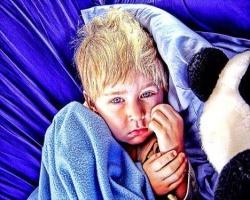Mental-health professionals say the number of children treated for difficulties with emotion, concentration, behavior, or ability to get along with others, as well as the sales of a wide range of psychiatric medications has exploded during the last decade. In 2005 at least 2.2 million American children over the age of 4 were being treated for such difficulties.
Psychiatrists admit they haven’t drawn clear lines between problem behaviors and mental illness, especially in kids, and they are debating future fixes. In the meantime, teachers, well-meaning neighbors, parents, and other relatives are becoming less willing to accept youthful misfits for who they are and help them adapt without prescribing drugs or attaching labels.
“We are suffering … from a shrinking tolerance for the broad limits of normality,” says. Dr. Stanley Turecki, author of The Difficult Child, and a practicing psychiatrist in New York and Massachusetts. A child who used to be accepted as shy, spirited, combative, dreamy, sensitive, fretful, or even “odd” is now labeled as “damaged or broken” by illness.
In a foreword to The Loss of Sadness, by Allan V. Horwitz and Jerome C. Wakefield, Dr. Robert L. Spitzer, a leading figure in psychiatry, acknowledges the imprecision of the Diagnostic and Statistical Manual of Mental Disorders, “especially the question of how to distinguish disorder from normal suffering,” but he also defends the widening of psychiatry’s safety net.
Spitzer holds that if notions of what’s normal for kids have changed, “… that’s (not) necessarily bad.” More is known now, he says, about how things can go wrong with human functioning. However, Northwestern University’s Christopher Lane, author of a new book, “Shyness: How Normal Behavior Became a Sickness,” calls psychiatry’s growing focus on children “the perfect storm” for over-diagnosis.
How can the church support parents of students with behavior problems or psychiatric diagnosis?
What boundaries can be set while keeping the church an inclusive place for all kids?




